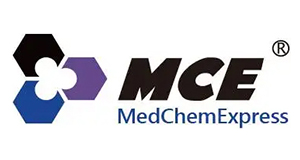Orcinol, CAS 504-15-4
Orcinol, CAS 504-15-4
SKU
MEXHY-D0168-5G
Packaging Unit
5 g
Manufacturer
MedChemExpress
Availability:
loading...
Price is loading...
Product Description: Orcinol (3,5-Dihydroxytoluene) is an organic compound used in biological dyeing and proteomics research. Orcinol inhibits melanogenesis in B16F10 cells by upregulating the MAPK/ERK signaling pathway, and suppresses the expression of MITF, tyrosinase (TYR), TRP1, and DCT. Orcinol exhibits certain DPPH radical scavenging activity. In addition, Orcinol can alter nitrogen balance in animals. Orcinol holds promise for research in cancer and metabolic diseases[1][2][3].
Formula: C7H8O2
References: [1]Murakami Y, et al. The Radical Scavenging Activity and Cytotoxicity of Resveratrol, Orcinol and 4-Allylphenol and their Inhibitory Effects on Cox-2 Gene Expression and Nf-κb Activation in RAW264.7 Cells Stimulated with Porphyromonas gingivalis-fimbriae. In Vivo. 2015 May-Jun;29(3):341-9./[2]Yu C L, et al. Orcinol inhibits melanogenesis in B16F10 cells via the upregulation of the MAPK/ERK signaling pathway[J]. Natural Product Communications, 2023, 18(3): 1934578X231156704./[3]Edwards MJ, et al. Acid loads induced by the detoxification of plant secondary metabolites do not limit feeding by common brushtail possums (Trichosurus vulpecula). J Comp Physiol B. 2010 Feb;180(2):247-57.
CAS Number: 504-15-4
Molecular Weight: 124.14
Compound Purity: 99.97
Research Area: Cancer; Metabolic Disease
Solubility: DMSO : 100 mg/mL (ultrasonic)
Target: ERK;Fluorescent Dye;p38 MAPK;Tyrosinase
Formula: C7H8O2
References: [1]Murakami Y, et al. The Radical Scavenging Activity and Cytotoxicity of Resveratrol, Orcinol and 4-Allylphenol and their Inhibitory Effects on Cox-2 Gene Expression and Nf-κb Activation in RAW264.7 Cells Stimulated with Porphyromonas gingivalis-fimbriae. In Vivo. 2015 May-Jun;29(3):341-9./[2]Yu C L, et al. Orcinol inhibits melanogenesis in B16F10 cells via the upregulation of the MAPK/ERK signaling pathway[J]. Natural Product Communications, 2023, 18(3): 1934578X231156704./[3]Edwards MJ, et al. Acid loads induced by the detoxification of plant secondary metabolites do not limit feeding by common brushtail possums (Trichosurus vulpecula). J Comp Physiol B. 2010 Feb;180(2):247-57.
CAS Number: 504-15-4
Molecular Weight: 124.14
Compound Purity: 99.97
Research Area: Cancer; Metabolic Disease
Solubility: DMSO : 100 mg/mL (ultrasonic)
Target: ERK;Fluorescent Dye;p38 MAPK;Tyrosinase
| SKU | MEXHY-D0168-5G |
|---|---|
| Manufacturer | MedChemExpress |
| Manufacturer SKU | HY-D0168-5G |
| Package Unit | 5 g |
| Quantity Unit | STK |
| Product information (PDF) |
|
| MSDS (PDF) |
|

 Deutsch
Deutsch








